James Earl Jones, the famous actor known for his deep, powerful voice as Darth Vader in *Star Wars* and Mufasa in *The Lion King*, has died at 93.
Jones was considered one of the greatest actors of his time, with a career that covered everything from Shakespeare plays to major Hollywood movies. He was one of the few actors to win an Emmy, Grammy, Oscar, and Tony Award, showing his incredible talent.
His death was reported by *Deadline*, through his representatives at Independent Artist Group.

James Earl Jones was born on January 17, 1931, in Arkabutla, Mississippi, and grew up with his grandparents in Dublin, Michigan. Despite becoming one of the most famous voices in the world, he struggled with a stutter as a child.
“I couldn’t talk,” Jones shared in a 1996 interview. “My first year of school, I didn’t speak, and this continued until high school.” A teacher helped him overcome his stutter by encouraging him to read poetry out loud.
After serving in the US Army during the Korean War, Jones decided to follow his passion for acting. He studied at the American Theatre Wing, supporting himself by working as a janitor. By the 1960s, he was recognized as one of the great Shakespearean actors of his time, playing famous roles like Othello and King Lear. He also made his film debut in the 1964 Stanley Kubrick movie *Dr. Strangelove*, playing Lt. Lothar Zogg.

In 1967, James Earl Jones played a boxer in *The Great White Hope*, a role that earned him the Tony Award for Best Actor in a Play. He later played the same role in the 1970 movie version and received his first Oscar nomination for it.
While he had many great acting roles, Jones became most famous for one where he didn’t even appear on screen: the voice of Darth Vader in *Star Wars*. Though another actor, David Prowse, wore the costume, Jones provided the deep, powerful voice that made Darth Vader one of the most unforgettable characters in movie history.
James Earl Jones initially chose not to be credited for his role as Darth Vader, but it has become one of his most famous performances. He continued to voice Vader for many years, including in the sequels *The Empire Strikes Back* and *Return of the Jedi*, the prequel *Revenge of the Sith*, and the spin-off *Rogue One*. In 2022, Jones retired from voicing Vader but agreed to let his voice be used in future projects through artificial intelligence and old recordings.
Jones also voiced another beloved character, Mufasa, in Disney’s 1994 film *The Lion King*. He returned to voice Mufasa again in the 2019 remake.
In the 1980s and 1990s, James Earl Jones appeared in many popular movies like *Conan the Barbarian*, *Coming to America*, *Field of Dreams*, *The Hunt for Red October*, *Patriot Games*, and *The Sandlot*. He also won his second Tony Award for his role in the original production of August Wilson’s play *Fences*.
Jones received eight Emmy Award nominations for his TV work and won twice in 1991: once for Outstanding Supporting Actor in a Limited Series or Movie for *Heat Wave*, and once for Outstanding Lead Actor in a Drama Series for *Gabriel’s Fire*.
He also kept performing on Broadway, starring in revivals of plays such as *On Golden Pond*, *Cat on a Hot Tin Roof*, *Driving Miss Daisy*, *The Best Man*, and *You Can’t Take It With You* over the past 20 years.
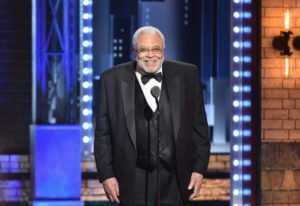
James Earl Jones received many awards and honors during his impressive career. In 2011, he was given an Honorary Academy Award, joining a special group of people who have won an Emmy, Grammy, Oscar, and Tony Award, known as “EGOT.” In 2022, Broadway’s Cort Theatre was renamed the James Earl Jones Theatre in his honor.
Rest in peace to the legendary James Earl Jones, one of the greatest actors of our time. Please share this story to remember him.
My MIL Made Me Sleep on the Garage Floor After My Husband Died – She Didn’t Expect to Beg for My Help a Month Later
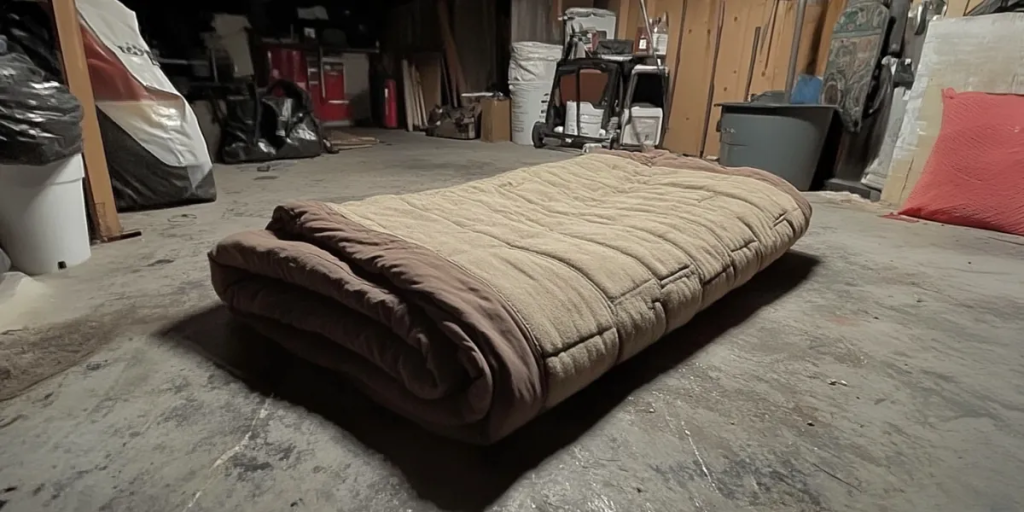
When April’s husband dies, she loses more than just the love of her life. She loses her home. Forced to sleep in the garage while her cruel mother-in-law, Judith, takes everything, April has no choice but to endure. But when Judith falls gravely ill, she comes begging for help. Will April choose revenge… or forgiveness?
I used to believe that love could protect me from anything. That my husband, James, would always be there to catch me if I fell.
When he asked me to leave my career in finance to be a stay-at-home mom, he promised I’d never have to worry about anything. I loved him, so I agreed.

A woman sitting on a porch | Source: Midjourney
We had twin baby girls, Grace and Ella, who became our entire world.
And then, he died.
The call came on a gray afternoon. James had been rushing home from a business trip, eager to see us. The roads were slick, and his car skidded off the highway. The officer on the phone kept talking, saying things like instant impact and no suffering.
But all I heard was the sound of my own heartbeat thudding in my ears.

A car crash scene | Source: Midjourney
The days blurred. The funeral came and went. I clung to my daughters, to the last voicemail James had left me, replaying it just to hear his voice.
I thought losing him was the worst thing that could ever happen to me.
I was wrong.
I had spent hours at the cemetery after the funeral. I had just wanted a few more moments with my husband before I went back to reality.

A woman standing in a cemetery | Source: Midjourney
Judith, my mother-in-law, had taken the girls home.
“We’ll talk when you get back,” she said. “I’ll get the twins bathed and settled in.”
When I returned home from the funeral, Judith was waiting for me.
She sat in the living room, her back straight, hands folded in her lap, staring at me with that same cold, calculated look she always had.
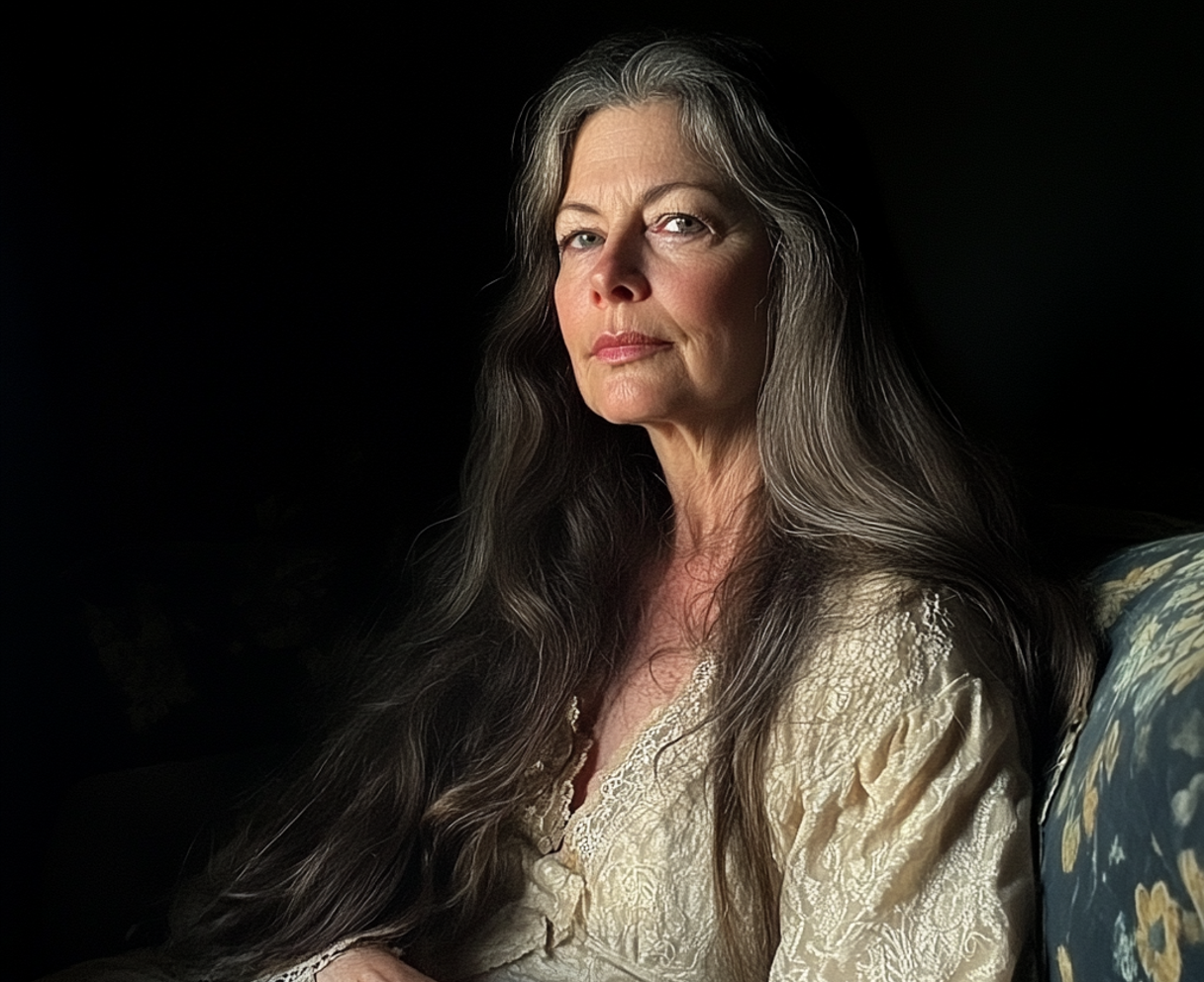
A woman sitting on a couch | Source: Midjourney
“This house belongs to me, April,” she said. “I let James and you live here, but now, I’m taking it back.”
My breath caught. I felt like someone had just pushed me.
“Judith, I…”
I thought I misheard her.
“What?”
She exhaled sharply, as if already bored of the conversation.
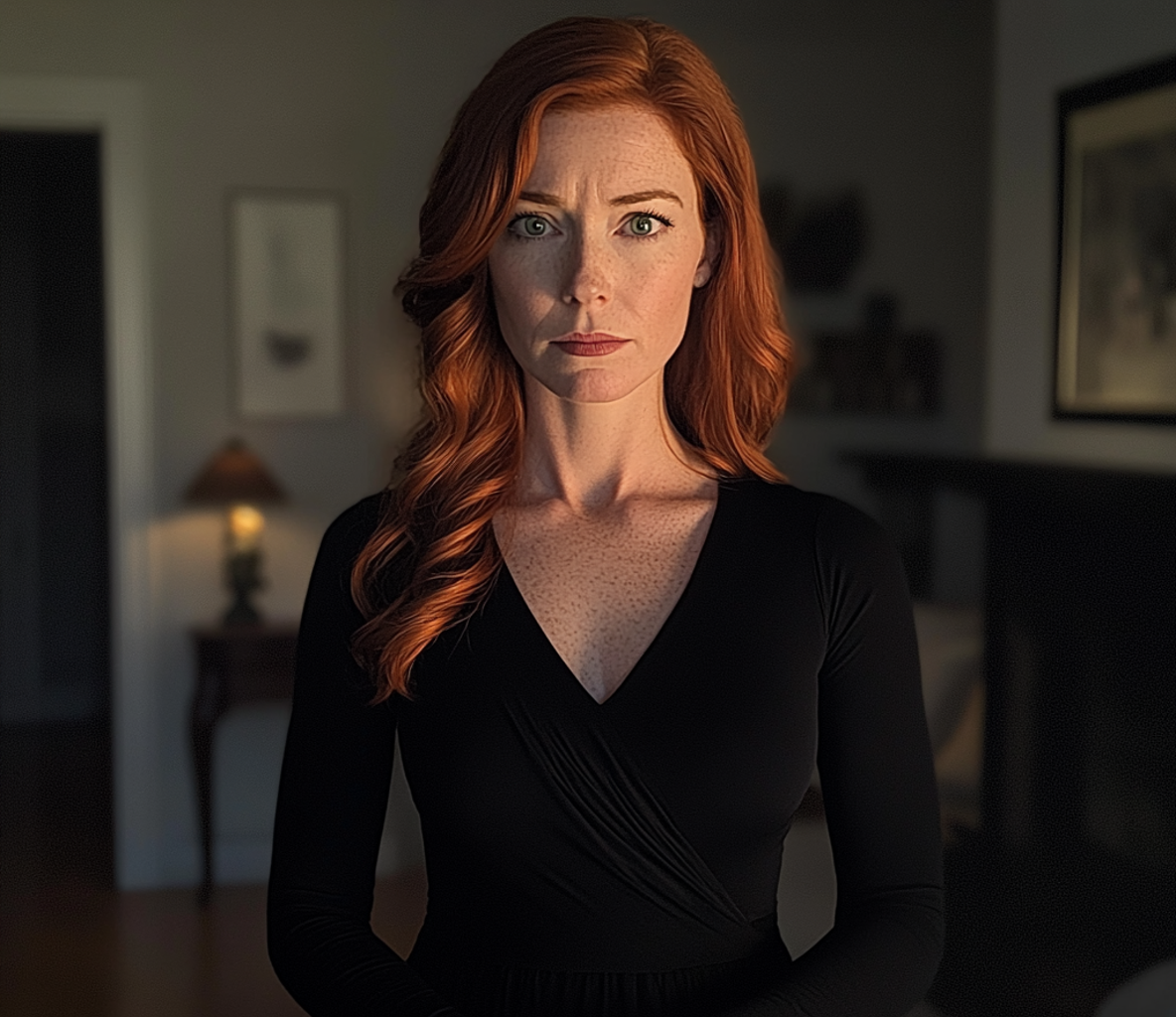
An upset woman standing in a living room | Source: Midjourney
“James never changed the deed,” she said. “I gave him the option after the twins were born, but he never followed through. So the house is still in my name. You can stay. But you’ll sleep in the garage.”
I stared at her, searching for a flicker of humanity. Some sign that she was speaking out in grief, that she would take it back any second now.
But she didn’t.
She just sat there, waiting for me to break.

A woman sitting on a couch | Source: Midjourney
She wanted me to beg her. I knew she did.
I looked at my daughters, their big, innocent, and sleepy eyes watching me from the couch. They had already lost their father. I couldn’t let them lose their home, too.
So, I agreed.

Twin girls sitting on a couch | Source: Midjourney
The garage smelled like oil and rust. At night, the cold crept through the thin camping mat and duvet I slept on. The cold seeped into my bones every night. When it got too unbearable, I curled up in the backseat of the car, my arms wrapped around myself for warmth.
I told myself it was temporary.
James had left money for us, but legal things took time. And I just had to be patient. Because until the lawyer finalized everything, I had nothing.

The interior of a garage | Source: Midjourney
No job, no access to our accounts, nowhere to go.
And even if I had someone to call, I couldn’t imagine saying the words out loud. The shame would have choked me.
I existed in silence. I only stepped into the house to cook and eat with the girls. To do their laundry and kiss them goodnight. I moved around my own home like a stranger.

A woman in a kitchen | Source: Midjourney
Now, even a month later, Judith barely acknowledged me. Why would she, anyway? She had won.
One afternoon, I was sitting in the living room with my girls. The crayons rolled across the coffee table, scattering in every direction. Grace and Ella sat cross-legged on the floor, their tiny hands gripping their colors of choice, faces scrunched in deep concentration.
“I’m drawing Daddy’s eyes blue!” Grace said, pressing hard into the paper. “Like the ocean.”

Crayons on a coffee table | Source: Midjourney
Ella tilted her head, studying her drawing.
“Mine is smiling. Daddy always smiled,” she said, a smile creeping onto her face.
I swallowed past the lump in my throat.
“He did,” I murmured.

Smiling little girls | Source: Midjourney
The air felt thick, heavy with the weight of unspoken things. The only sounds were the scratch of crayon against the paper and the occasional shuffle of tiny feet against the rug.
I ran my fingers along the edge of a blank sheet, willing myself to keep it together.
Then, Ella spoke.
“Mommy?”
I looked up.
“Yeah, baby? What’s wrong?”

An upset woman | Source: Midjourney
She hesitated, chewing her bottom lip.
“Why do you sleep in the garage?”
My hands stilled.
Grace looked up too, her expression open and trusting. It was the same expression James would have on his face when he wanted the girls to tell him about their nightmares.

A sad little girl | Source: Midjourney
“Yeah,” she said. “Grandma sleeps in your bed. Why don’t you sleep there?”
A sharp, twisting pain settled in my chest.
I forced a smile, tucking a strand of hair behind Ella’s ear.
“Because sometimes grown-ups have to make hard decisions, baby girls. It’s not always nice, but there’s always a bigger reason.”

A close up of a little girl | Source: Midjourney
Ella frowned. I could see thoughts formulating in her head.
“But you’re Daddy’s wife,” she said simply.
The words knocked the air from my lungs.
“I am,” I whispered. “I am Daddy’s wife, yes.”

A close up of a woman | Source: Midjourney
Grace blinked up at me, waiting. I hadn’t realized that my girls were holding onto these thoughts.
“Then why doesn’t Grandma get the big bed?”
I opened my mouth, but no words came.
A creak sounded from the hallway. I glanced up, and there, just beyond the corner…
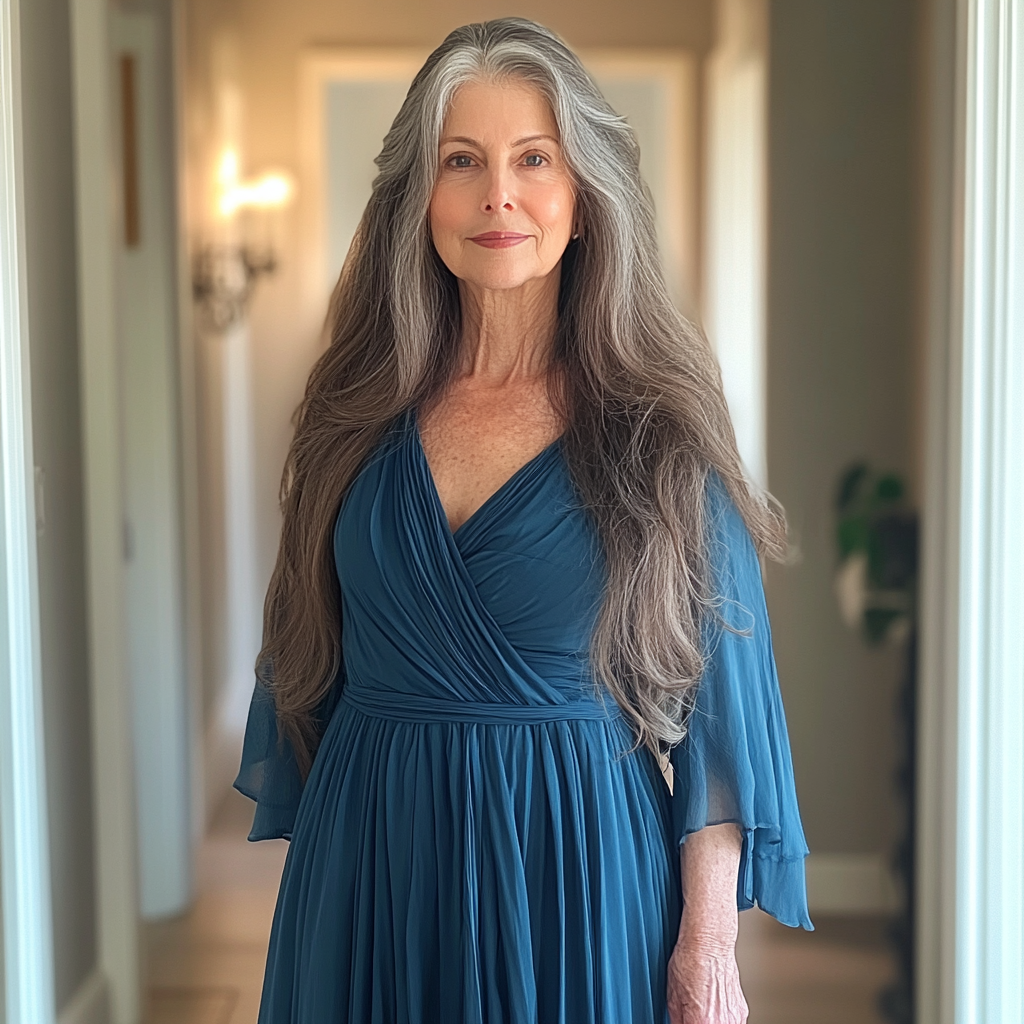
An older woman standing in a hallway | Source: Midjourney
Stood Judith.
She wasn’t watching me. She was watching them.
Her hands gripped the doorframe, her face pale, her lips pressed into a thin line. For the first time, she looked like a woman who had made a terrible mistake.
But she didn’t say a word.
She just stood there, listening. And when I didn’t answer my daughters, she turned and walked away.
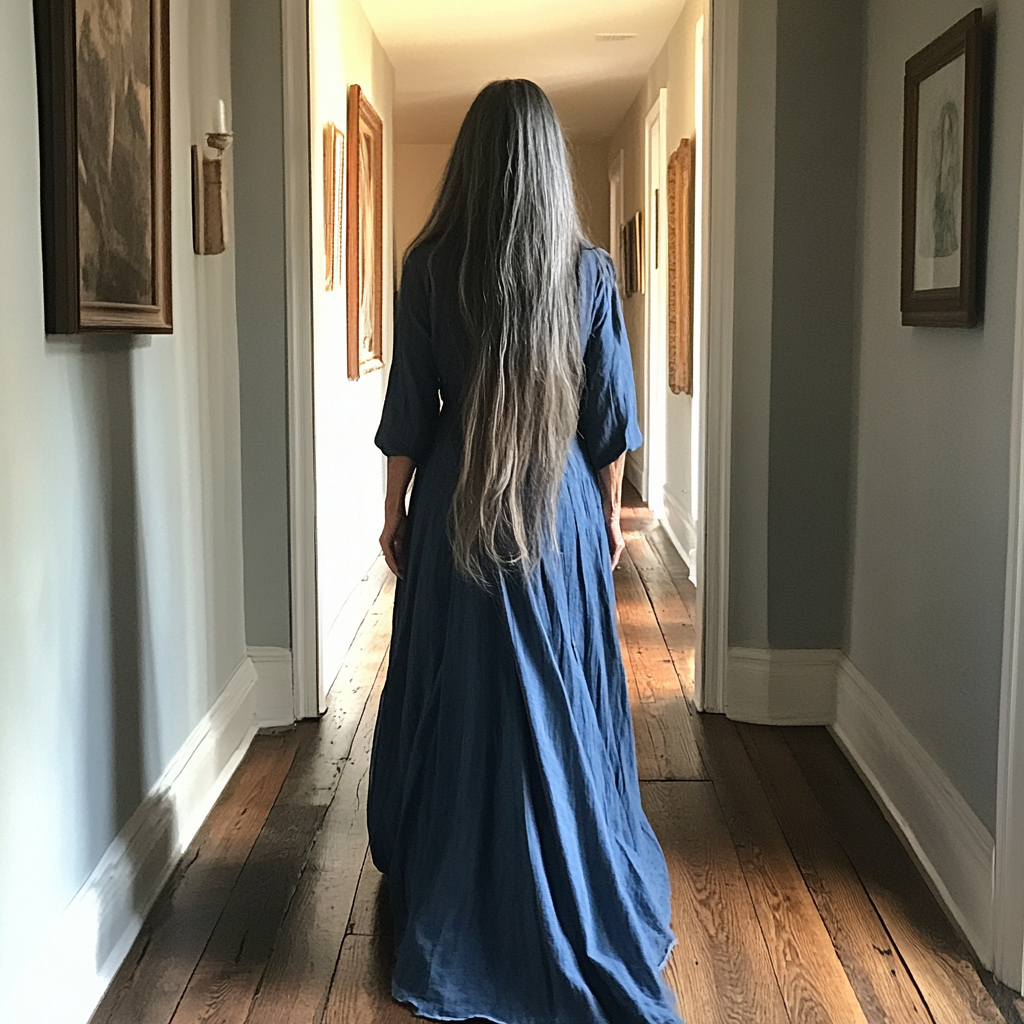
A woman walking down a hallway | Source: Midjourney
And then, one night, there was a knock at the garage door. I opened it to find Judith standing there.
But she wasn’t the same woman who had banished me. For the first time in a long time, I looked at her.
Her usually pristine hair was unkempt, the gray streaks more pronounced. Her face, always so rigid with control, was pale and sunken. Her lips were dry and cracked.
And her hands… her hands trembled uncontrollably.
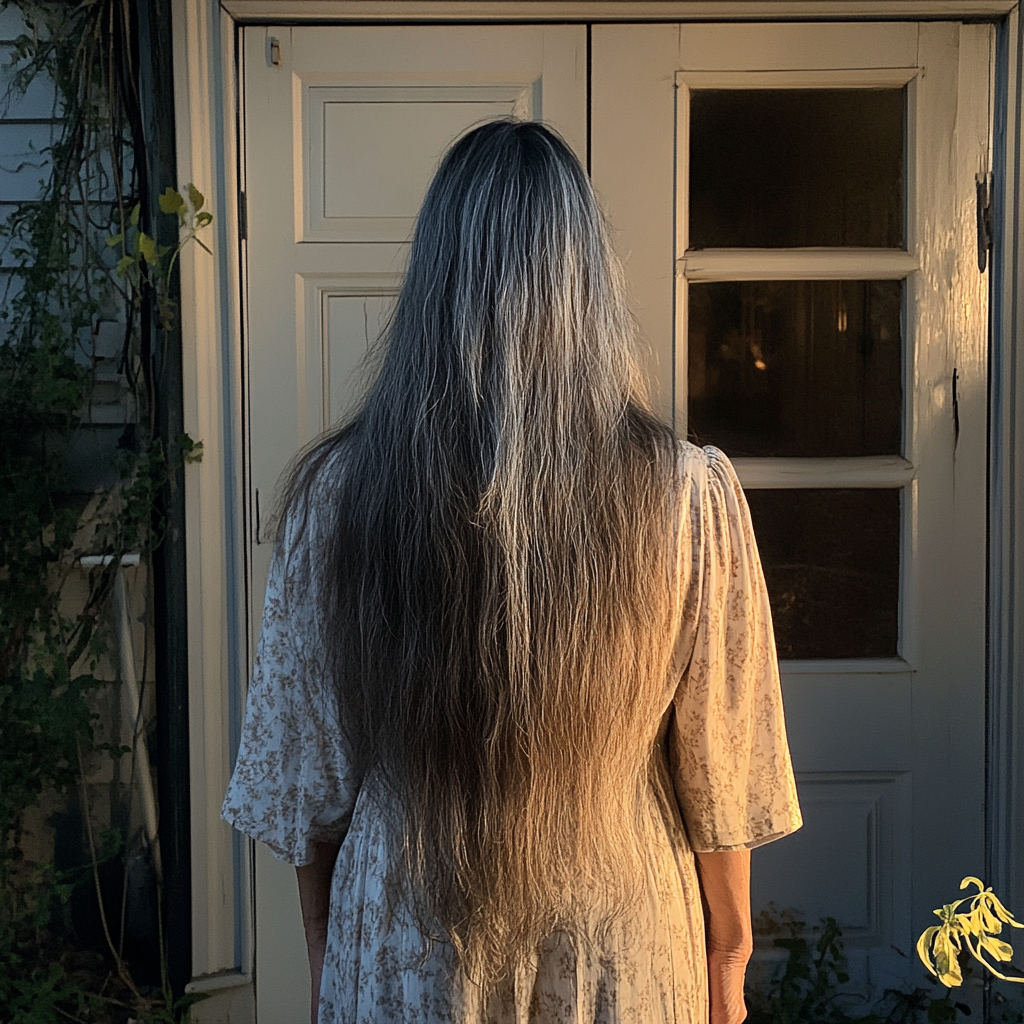
A woman standing in front of a door | Source: Midjourney
I frowned.
Had she always been this thin? I cooked every day, making sure that there was more than enough food for all four of us. Had Judith not been eating?
She swallowed hard, and when she spoke, her voice cracked.
“April, please.”
I said nothing.
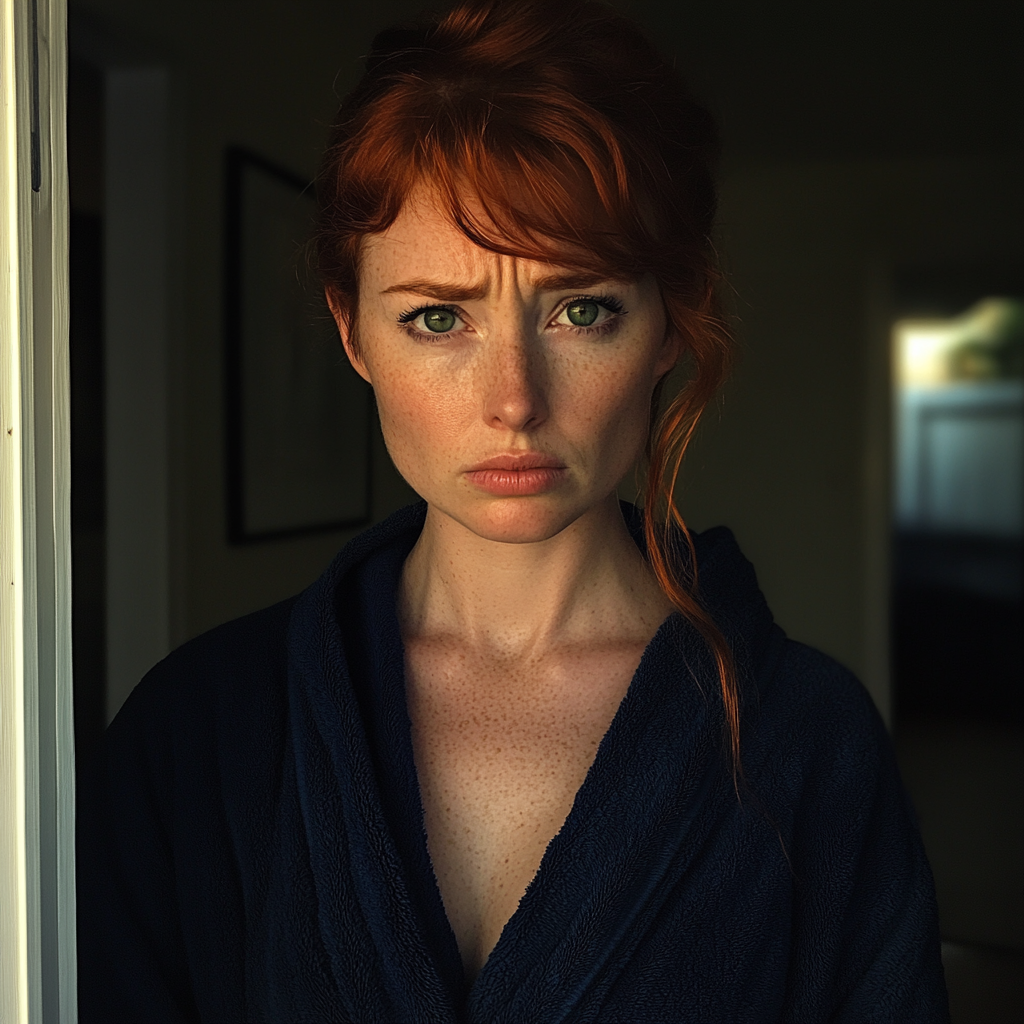
A woman standing in a doorway | Source: Midjourney
She blinked rapidly, as if trying to hold back tears.
“I made a terrible mistake.”
I waited.
She exhaled shakily, then whispered.
“I’m sick…” she said.

A close up of an older woman | Source: Midjourney
Her lips pressed together, and for the first time, I saw something I had never seen in her before.
Fear.
I should’ve felt vindicated. I should have relished the moment she stood before me, desperate and vulnerable. But all I felt was exhaustion.
“What do you want?” I asked, my voice hollow.
Her hands tightened into fists at her sides.
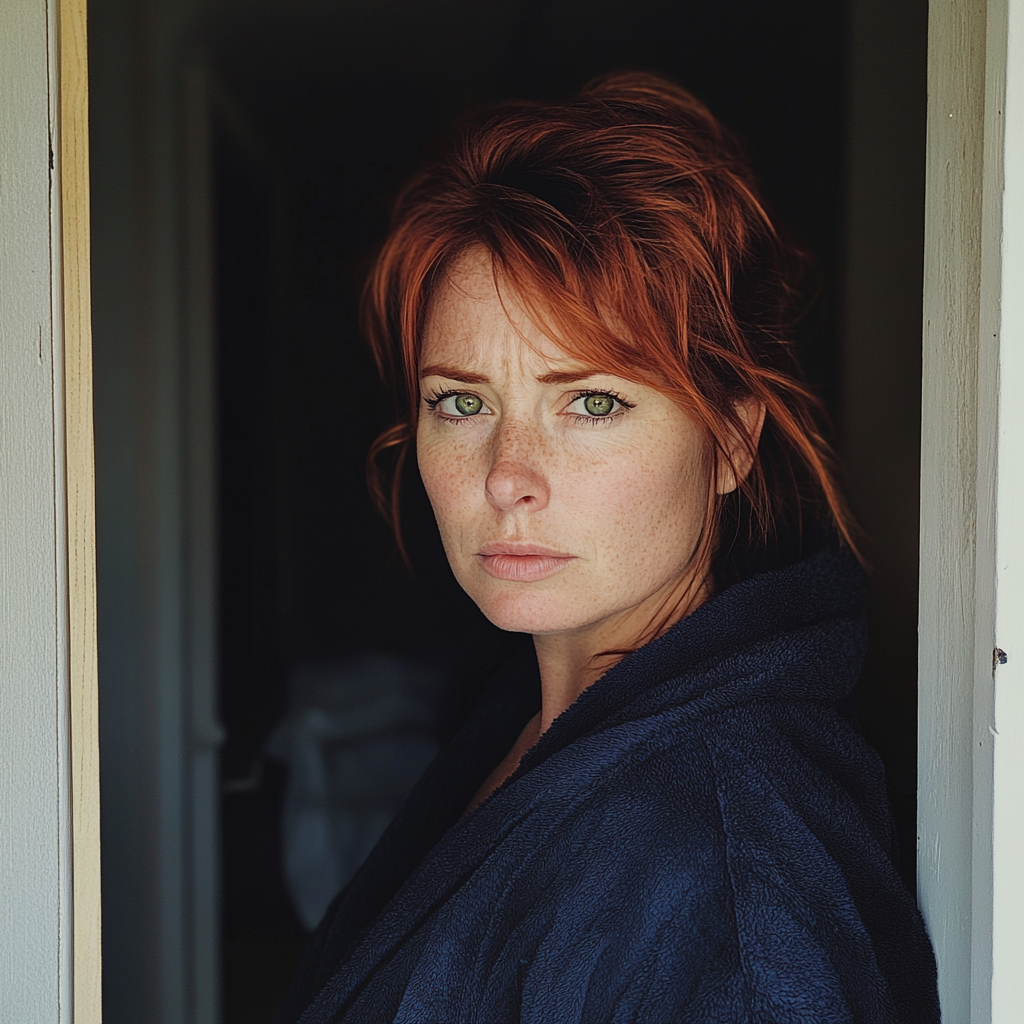
A close up of a woman wearing a robe | Source: Midjourney
“The doctors say it’s bad. And I can’t stop thinking that maybe… maybe this is my punishment.”
I crossed my arms. I couldn’t believe what I was hearing.
“For what? For throwing your widowed daughter-in-law into a garage?”
She flinched, as if I had slapped her.

A close up of an older woman | Source: Midjourney
“For everything, April. For the way I treated you, darling. For the way I pushed people away.”
Silence stretched between us.
Then, she reached into her coat and pulled out a stack of papers.
“I transferred the house to you and the girls, April,” she said. “It’s yours now. Officially. As it always should have been.”
“Why?” My stomach clenched.

A woman holding a stack of paperwork | Source: Midjourney
“Because I have no one else.”
I stared at the papers in my hands. This is what I had been waiting for, proof that I never had to beg. That I never had to fear being thrown away again.
But Judith’s face was lined with regret. And in that moment, I saw her not as my personal tormentor but as a woman who had finally realized the weight of her own cruelty.

A woman holding a stack of paperwork | Source: Midjourney
I stepped inside.
“Come inside,” I said.
Her breath hitched.
“Oh, it’s cold in here,” she said.
“I know, but you get used to it,” I replied.
For the first time, the woman who had once looked at me like I was nothing let herself cry.

A woman standing inside a garage | Source: Midjourney
The guest room still didn’t feel like hers. I could see it. The way she moved around it, like a stranger, making sure that everything was in the exact same spot it had been.
Judith sat stiffly on the edge of the bed, hands folded in her lap, staring at the cup of tea I had placed on the nightstand.
The soft glow of the bedside lamp cast shadows across her face, making her look small somehow.

The interior of a guest bedroom | Source: Midjourney
It was the first night since I had moved back into the house, with Judith moving into the guest room. Everything felt… strange.
And I wasn’t sure how I felt to be in the same room that James and I had shared for so long. But I was just grateful to be back inside.
Now, I sat across from Judith, pulling my legs up onto the chair, cradling my own mug between my hands.
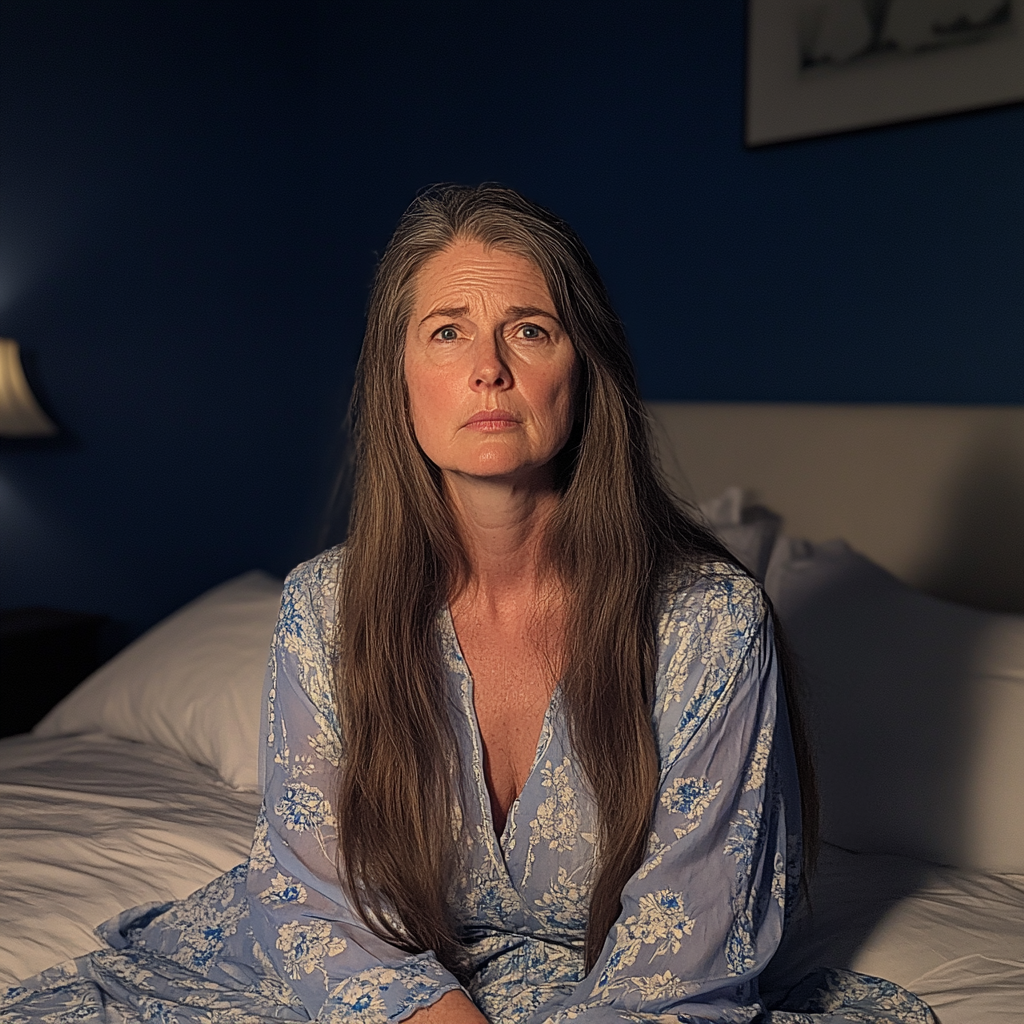
An older woman sitting on a bed | Source: Midjourney
The silence stretched, thick and uneasy but not hostile.
She was the one who broke it.
“I have cancer,” she said quietly. “Stage three.”
I exhaled slowly. We both knew it was serious, but hearing the words still sent a strange, sinking feeling through my chest.

A woman sitting on an armchair | Source: Midjourney
“I don’t know what’s going to happen next,” she admitted.
Her hands trembled slightly as she traced the rim of her mug.
“I’m scared, April.”
“I know,” I said, nodding. “You’re not alone, though, Judith. I’m here. The twins are here for cuddles and laughs.”
“I don’t deserve you… after everything…”

A women sitting on a bed | Source: Midjourney
“Probably not,” I said, cutting her off before she could spiral into guilt. “But Grace and Ella love you. And whether you like it or not, you’re part of this family.”
Her throat bobbed, and she let out a shaky breath.
“James would want us to take care of each other.”
“Yeah,” I replied. “He would.”

A woman sitting on a couch | Source: Midjourney
Judith exhaled sharply, rubbing a hand over her face.
“God, I’m going to be eating so much damn soup, aren’t I?”
I snorted.
“Oh, absolutely! Soup, herbal tea, all the nutritious food you never wanted to touch before.”

A bowl of soup | Source: Midjourney
She made a face.
“Can’t we just pretend wine is medicinal?”
I laughed, and to my surprise, Judith laughed too.
It wasn’t perfect. It wasn’t easy. But in that moment, I knew we were going to be okay.

A smiling older woman | Source: Midjourney
Because despite everything, we were family.
After that, I took Judith to every doctor appointment possible. I wanted to get back to work, but I figured that this was more important for the moment.
We had the money that James left behind, and we would use it until I got back into action.

A woman driving a car | Source: Midjourney
The doctor’s office smelled sterile, the antiseptic strong. Judith sat beside me, hands folded tightly in her lap, her knuckles bone-white.
Dr. Patel, a man in his fifties with kind eyes, adjusted his glasses and flipped through Judith’s chart.
“The biopsy confirms it’s stage three,” he said gently. “We need to start treatment as soon as possible. Chemo, radiation… It won’t be easy, but it’s still treatable.”

A doctor sitting at his desk | Source: Midjourney
Judith nodded stiffly, as if the diagnosis hadn’t just put a clock on her life.
I glanced at her, waiting for her to say something. She didn’t.
“Will she need surgery?” I asked, filling the silence.
The doctor gave a small nod.

A woman sitting in a doctor’s room | Source: Midjourney
“Eventually, yes. But first, we focus on shrinking the tumor. This is going to be a long road.”
“I know,” Judith said, letting out a breath.
It was the first time I’d ever seen her look small.
“Do you have a support system? Family who can help?” he asked.
Judith hesitated.
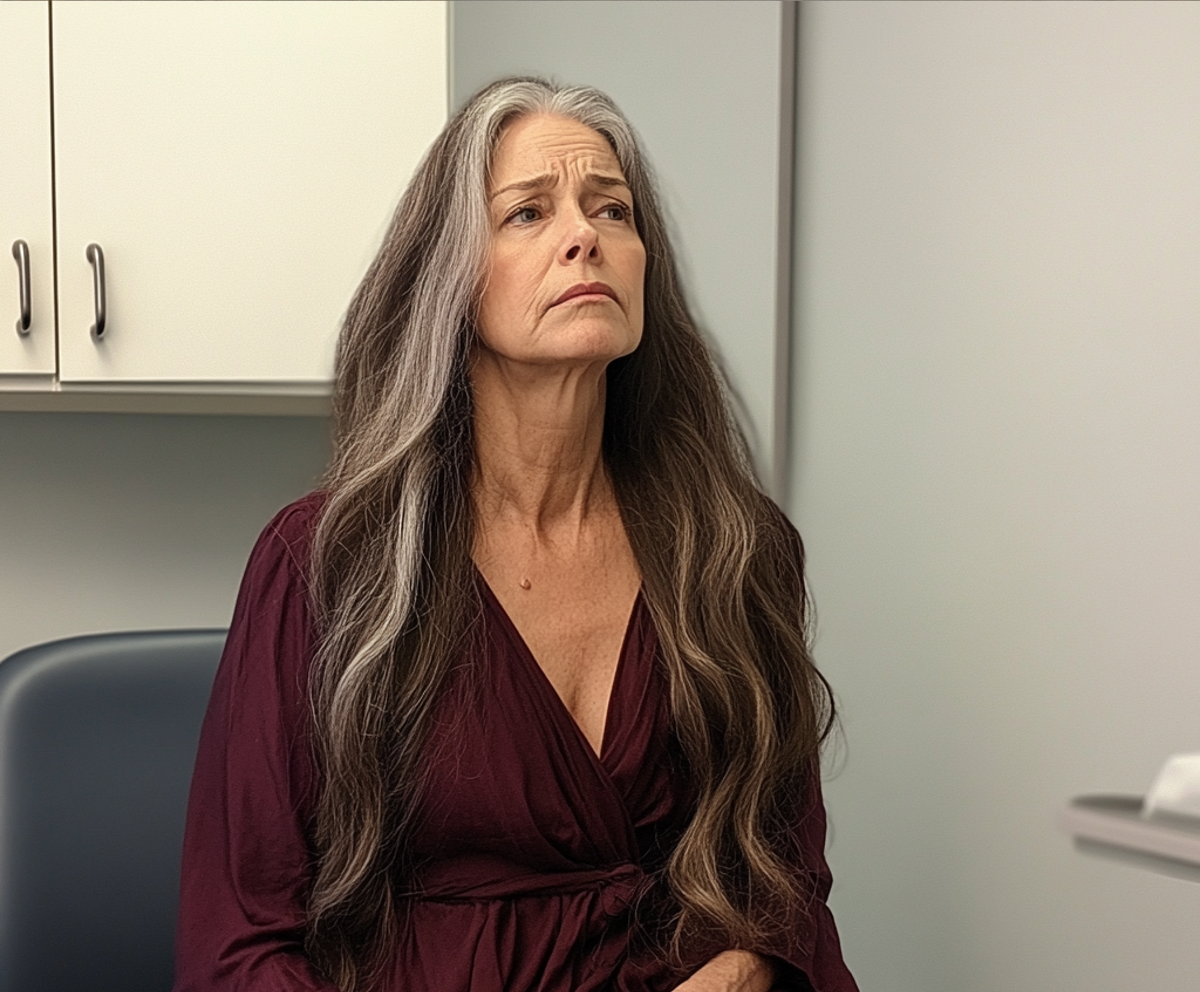
A woman sitting in a doctor’s room | Source: Midjourney
“She has us,” I said, my voice steady. “She won’t go through this alone.”
I reached out and covered her hand with mine. Judith’s fingers twitched beneath mine, like she wasn’t used to being held onto.
“Good, that makes all the difference,” the doctor said, smiling.
Judith didn’t speak the whole way home. But when we pulled into the driveway, she exhaled shakily.
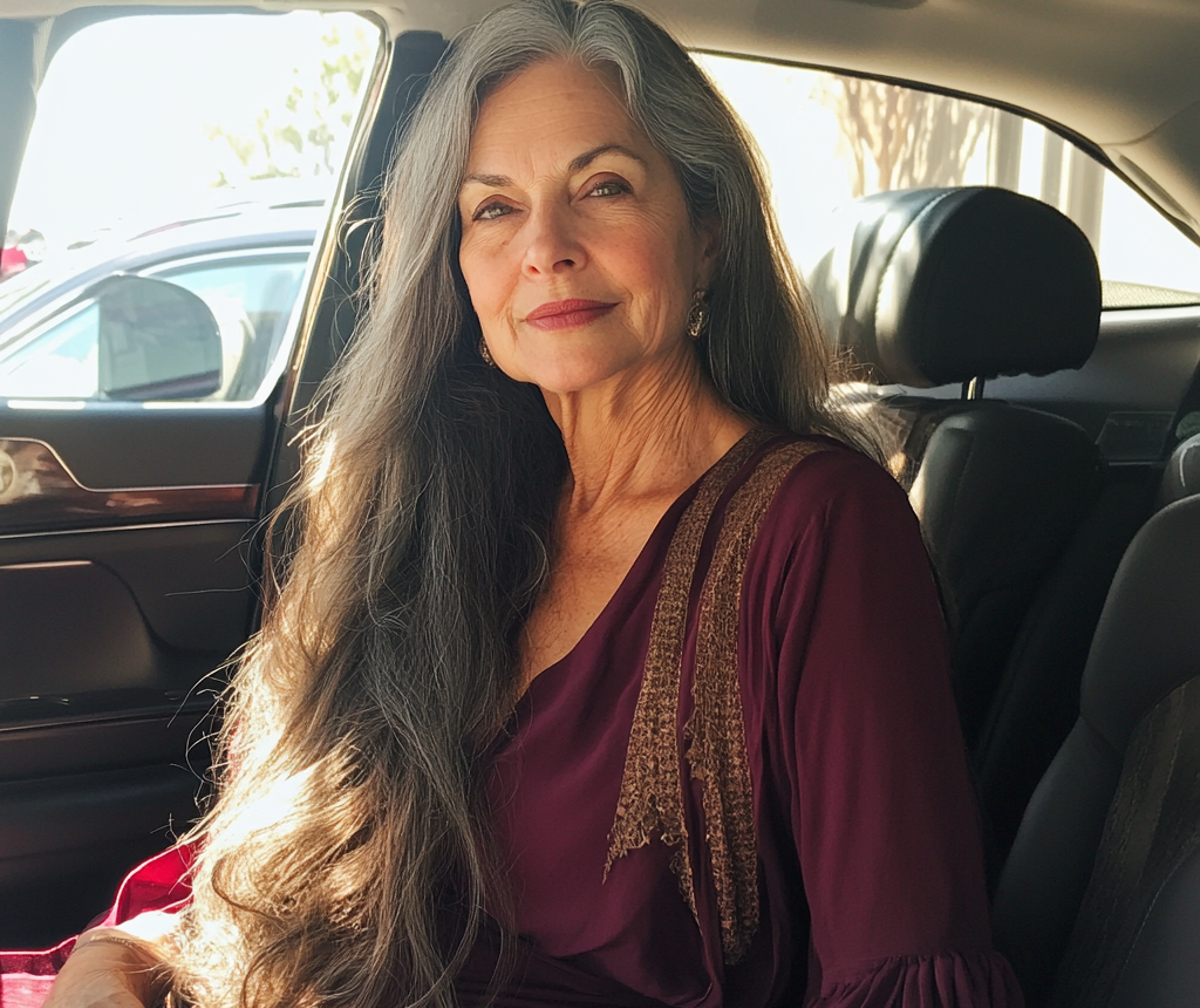
A smiling woman | Source: Midjourney
“Thank you, April. Thank you for being wonderful.”
“We’ll get through this,” I said.
For the first time, she nodded like she believed me.
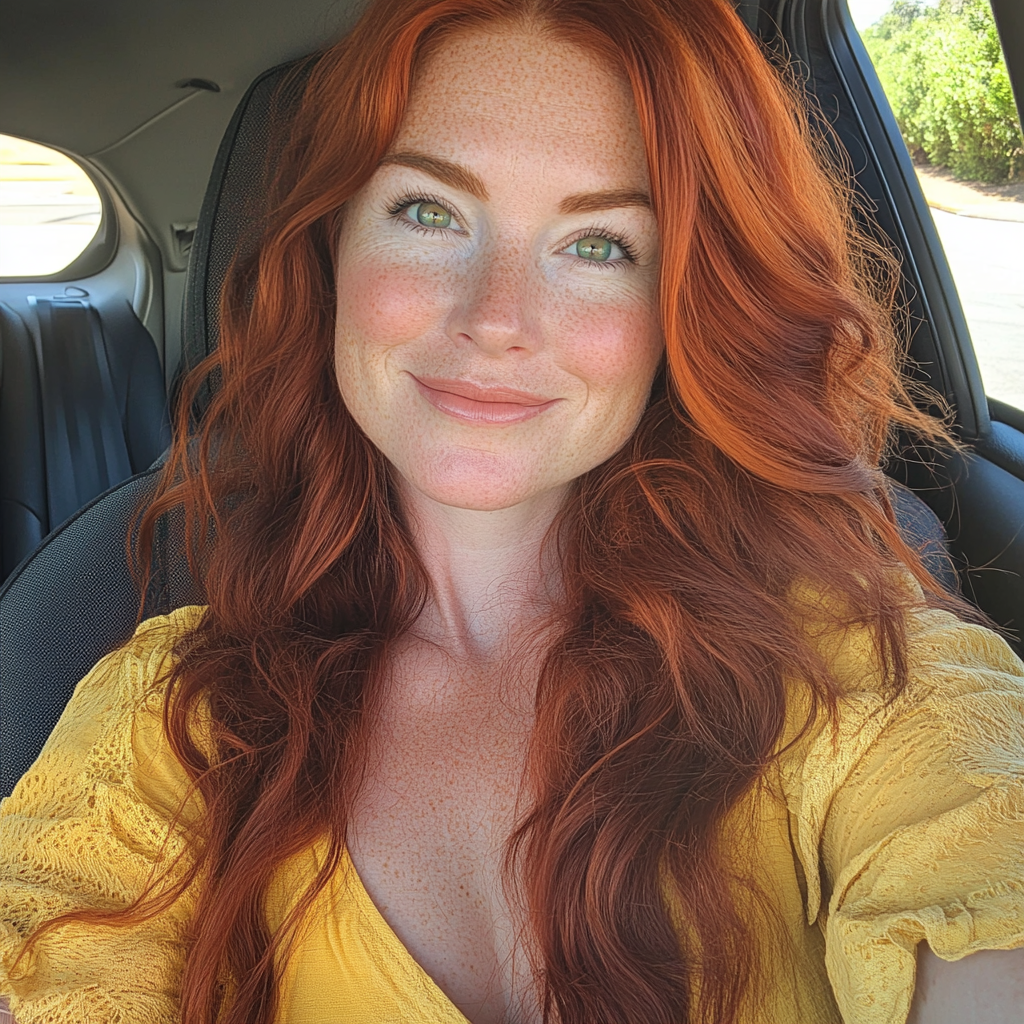
A smiling woman | Source: Midjourney



Leave a Reply